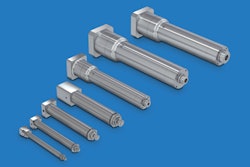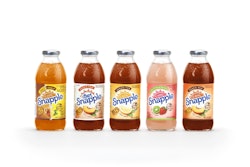According to industry numbers, corrugated is utilized for 95% of packaged goods, with boxes (i.e. shippers) accounting for the overwhelmingly majority of that volume. This article will use the word “corrugated” to refer to boxes in the KD (knocked-down) position, in contrast to the erected box.
Corrugated is an engineered material, specified by paper grade, flute, style, manufacturer’s joint, and adhesive—mainly. Engineering, however, does not solve every problem that can be encountered with corrugated. Some easy-to-overlook culprits are storage and handling practices.
Weather or not
Because corrugated is hygroscopic, the relative humidity of the storage area should be maintained within favorable tolerances. That doesn’t automatically mean that a company needs to go an energy-intensive route via ambient-control devices.
A simple, effective solution can be to choose an area within the facility that is least susceptible to high-humidity conditions; for example, rather than an area close to the loading docks, with their routine raising of doors and the ingress of humidity, a better area is one that is farther into the interior of the facility. Better yet is to select a location close to where the corrugated is set up and filled.
Humidity varies by region and season, a fact intuitively grasped by all. Those variables aside, if high humidity is harmful, water is ruinous; therefore, under no circumstances should corrugated be stored outdoors, no matter the overhead protection.
What are some specific problems caused by moisture? There are those owing to dimensional changes: the corrugated absorbs moisture causing it to swell, warp, or distort to whatever degree. All of these cause problems as the corrugated is erected into boxes, whether the operation is manual or automated. Manual operations are slowed and automated case erectors are jammed.
Another set of problems relate to unitizing. Whether the unit load is columnar or interlocking, what’s desired is that the boxes stack in aligned fashion, something made less probable by boxes that are out-of-square. Those unit loads can be unstable and therefore hazardous, since they can collapse on their own and more probably under a superimposed load.
High-humidity conditions can weaken the adhesive that bonds the fluted medium to the liners, enough, in fact, that the corrugated can delaminate. The typical adhesive used for corrugated is of a starch composition, not known for being moisture-resistant (there are moisture-resistant formulations but they are more expensive).
Moisture not only affects corrugated functionally, it also diminishes the appearance of the container. Moisture produces unsightly staining. That’s bad under all circumstances but worse when the corrugated serves as a retail unit, sold from shelves or from pallets.
Whereas too much moisture is problematic, so too is too little. Functionally, corrugated becomes brittle and crinkly. Aesthetically, corrugated takes on a faded, dried-out appearance, even through kraft-brown liners. Some regions are arid year-round but those that aren’t still can experience periods of low humidity, either from wintry cold or summer heat. Fortunately, combating the harmful effects of low humidity need not be complicated or expensive. In addition to any aforementioned approaches that can be modified for low humidity, inventory control can be effective, utilizing FIFO (first-in-first-out). That way, the oldest inventory is used rather than remaining around and becoming more compromised.
Good things in store
Corrugated never should be stored in direct contact with the floor as that invites contamination and damage from a variety of sources. Corrugated should be stored on pallets, ideally, which avoids direct contact with the floor and retains the means for mechanical handling (caution: forklifts, if operated carelessly, can damage corrugated). Pallets should be of quality construction; otherwise, splinters, protruding nails, and other defects can inflict damage.
As much as can be said about the benefits of using mechanical means to get corrugated in and out of storage, there are times when corrugated is handled manually, for example, a worker carrying a bundle (perhaps held together by plastic straps). That worker should be trained to never toss, drag, or drop that bundle.
Throughout its time in storage and up to the time it’s erected into a box, corrugated should remain flat and never stored on its edge. A property of corrugated is flat-crush resistance; even so, that property should not be exceeded by superimposed weights. The stacking of unit loads saves space; however, some type of flat cover should be placed on the top of a unit load in order to evenly distribute the superimposed weight.
Incidentally, superimposed weight should be like-on-like, meaning, weights other than corrugated should not be superimposed on unit loads of corrugated. A solution for avoiding direct contact with the floor and for avoiding superimposed weights is storage racks, especially if the facility already is so equipped. And if there has to be an investment in storage racks, a favorable tradeoff is that the specified heights of unit loads can be increased, leading to increased storage densities, and later, increased handling efficiencies.
Recycled content is an X-factor
Sustainability has increased the popularity of corrugated comprising recycled content. Regardless of the percent of recycled content, the resulting corrugated is not as strong as its counterpart comprised of virgin material. So whereas the guidelines presented in this article are relevant for virgin corrugated, they are more so for recycled corrugated. Restated: what can compromise virgin corrugated can compromise recycled-content corrugated more easily.
Returning to the 95% statistic that opened this article, its division among the versions of corrugated might vary; however, corrugated, as an overall category, will retain its dominance. In establishing practices meant to assure that corrugated is fit for its intended purposes, the guidelines are, “Keep out of reach of hazardous conditions,” and, “Handle with care.”
_____________________________________________________________________________________________
Sterling Anthony is a consultant, specializing in the strategic use of marketing, logistics, and packaging. His contact information is: 100 Renaissance Center- P.O. Box 43176; Detroit, MI 48243; 313-531-1875 office; 313-531-1972 fax; [email protected]; www.pkgconsultant


























